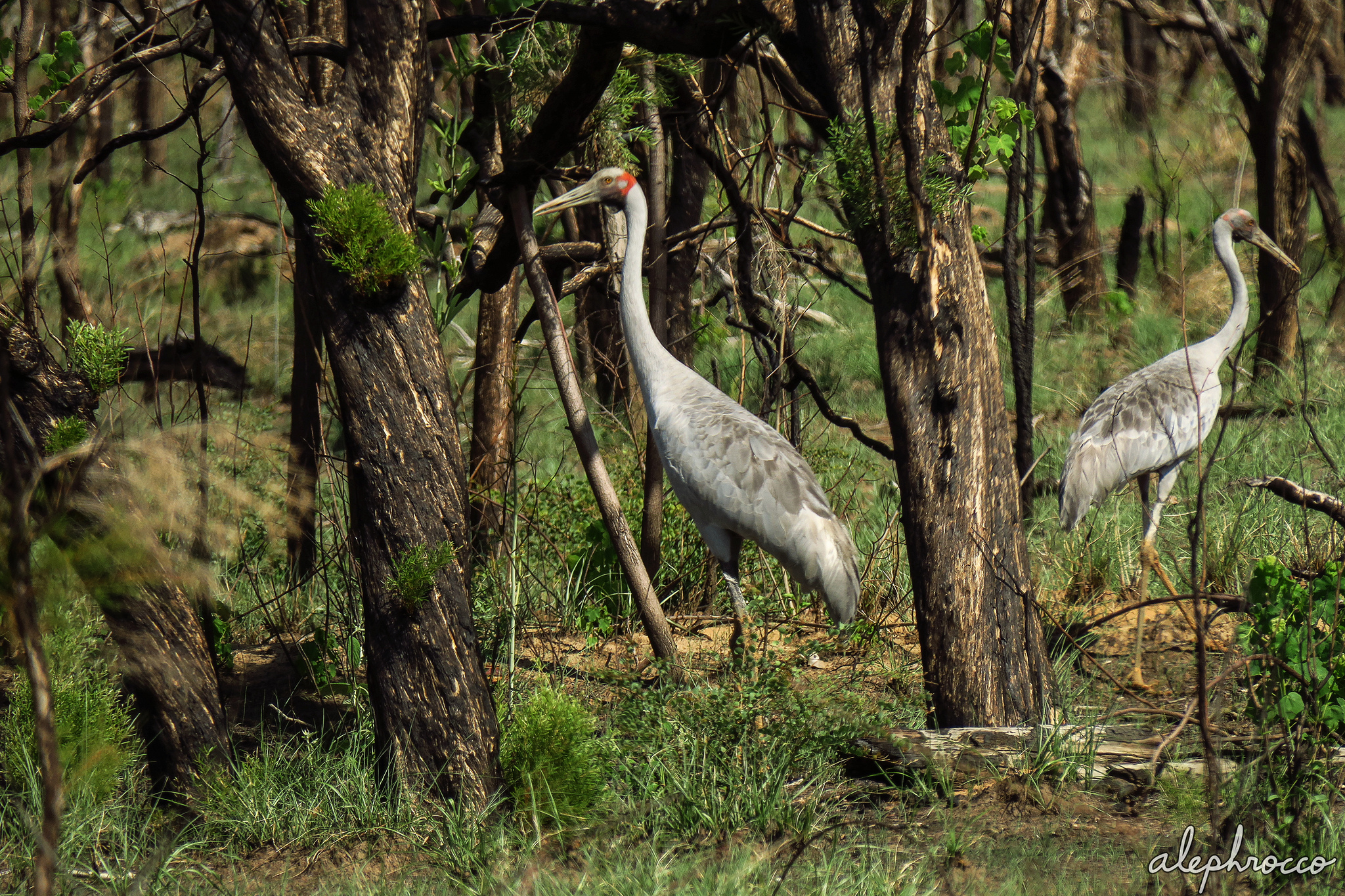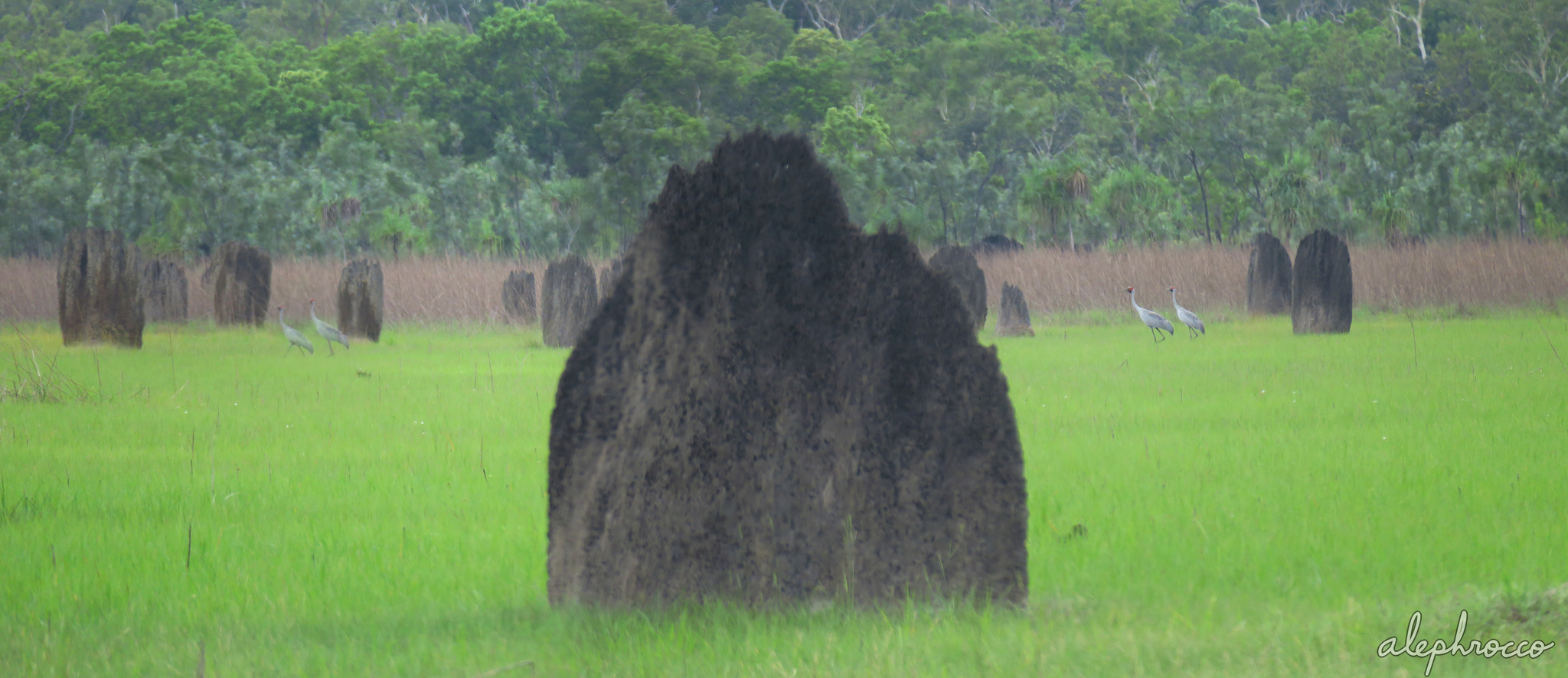
A family group of brolgas (Antigone rubicunda) wander through the savannah woodlands in the Kimberley. These large towering birds join black-necked storks (Ephippiorhynchus asiaticus, also called the Jabiru) as the tallest birds of tropical Northern Australia, reaching heights of over four feet and a wingspan of over seven! Brolgas are one of four species of cranes in the genus Antigone, all of which are iconic in their range. This also includes the sarus crane (A. antigone), sandhill crane (A. canadensis), and white-naped crane (A. vipio). Though common, brolgas are shy and tend to strut away at a distance with elegance. Brolgas live in small family groups, in this case consisting of two adults and a juvenile, the latter with hardly any red coloration on the head. They are a socially monogamous species (usually mating for life) and breed during the wet season, building large terrestrial mounds of sticks in wetland habitats. Brolgas are well known for their dramatic trumpeting call, performed synchronously by both the male and female. They will point their beaks straight upward and repetitively trumpet, the male producing a longer call corresponding to about twice the duration of a single female sound. But, the most well-known behavior of brolgas is their courtship ritual. They spread their wings out and face each other, jumping and “dancing” with elaborate head movements. These dances can be performed in pairs, in large groups, or even with just a single individual. When alone, a brolga will pick up a stem of large grass and flail or toss it in the air repeatedly while jumping in hopes of impressing its mate. Many of these movements are imitated in Aboriginal traditional dances. The common name Brolga is also derived from the word “burralga,” from Gamilaraay language.
Photographed after pursuit [3]





A dark dingo (Canis lupus dingo) pops out of the brush in Western Australia. Dingos arrived in Australia about 3,500 to 5,000 years ago, transported by ship. In the modern day, humans persecute wild dingos which may pose a threat to livestock— a common theme with large mammalian predators throughout the world. In contrast to domestic dogs, dingos have had little selective breeding and the associated behavioral and morphological traits. Unfortunately, interbreeding with domestic dogs is common, and the prevalence of dingo hybrids ranges from very low (~5%) to almost 100%, depending on the population. The proportion of hybrids is widely increasing and threatens the persistence of a genetically “pure” dingo. Inevitably, hybridization will continue to dilute the gene pool, and preservation of an ancestral dingo has most likely already been lost. Coat colors range from light to dark, with the classic Australian dingo being khaki brown with a light-colored belly. I found this individual particularly beautiful, having a black mask and coat interspersed with golden brown.


